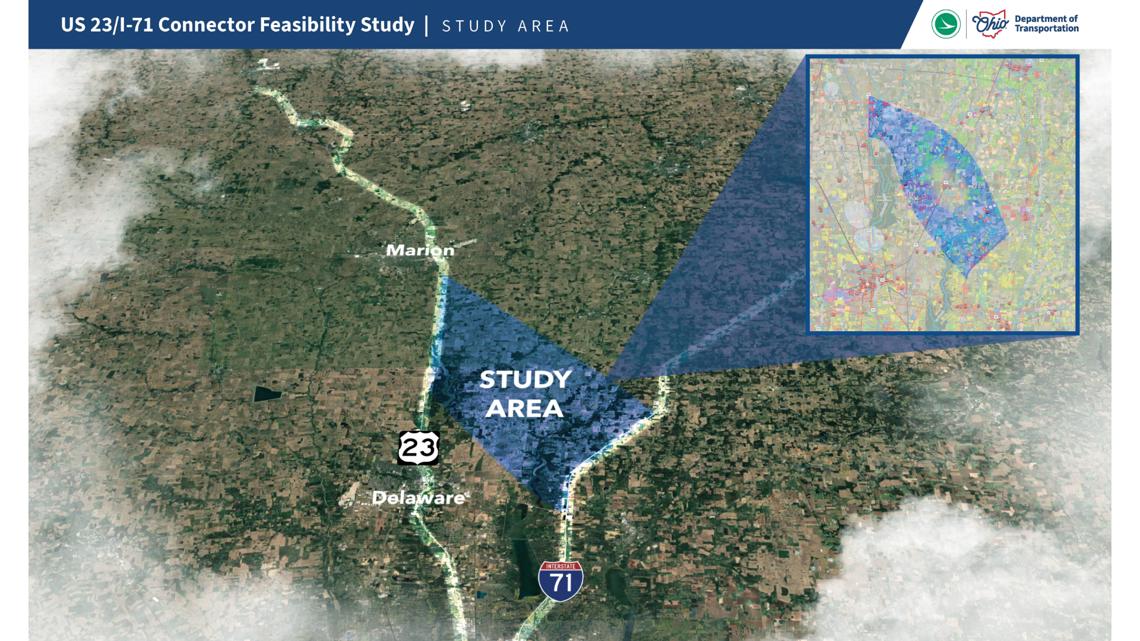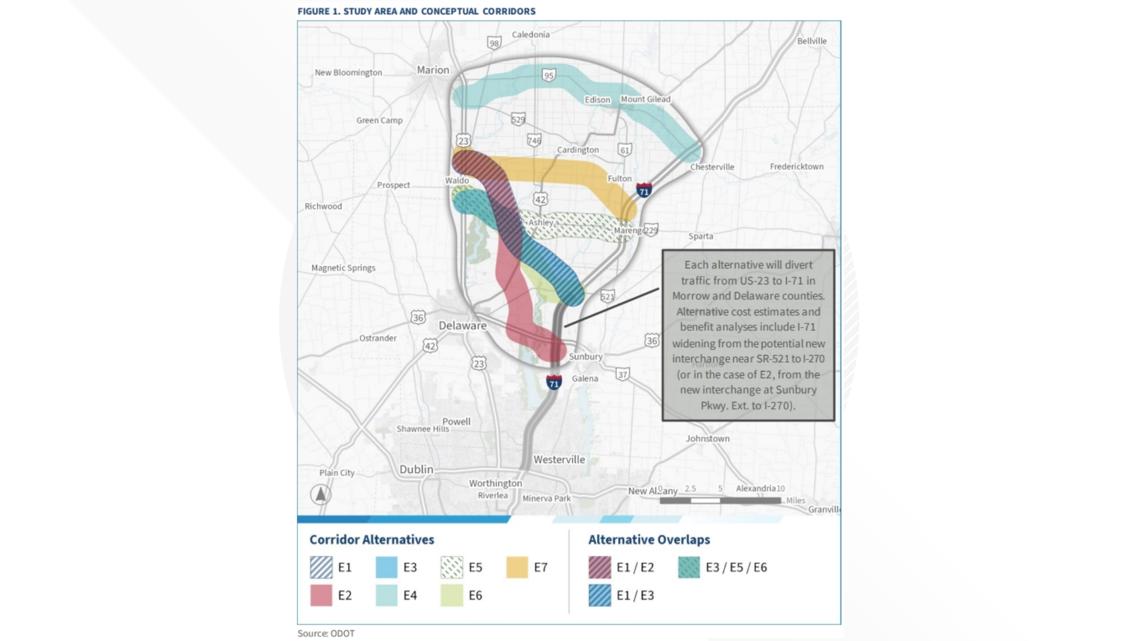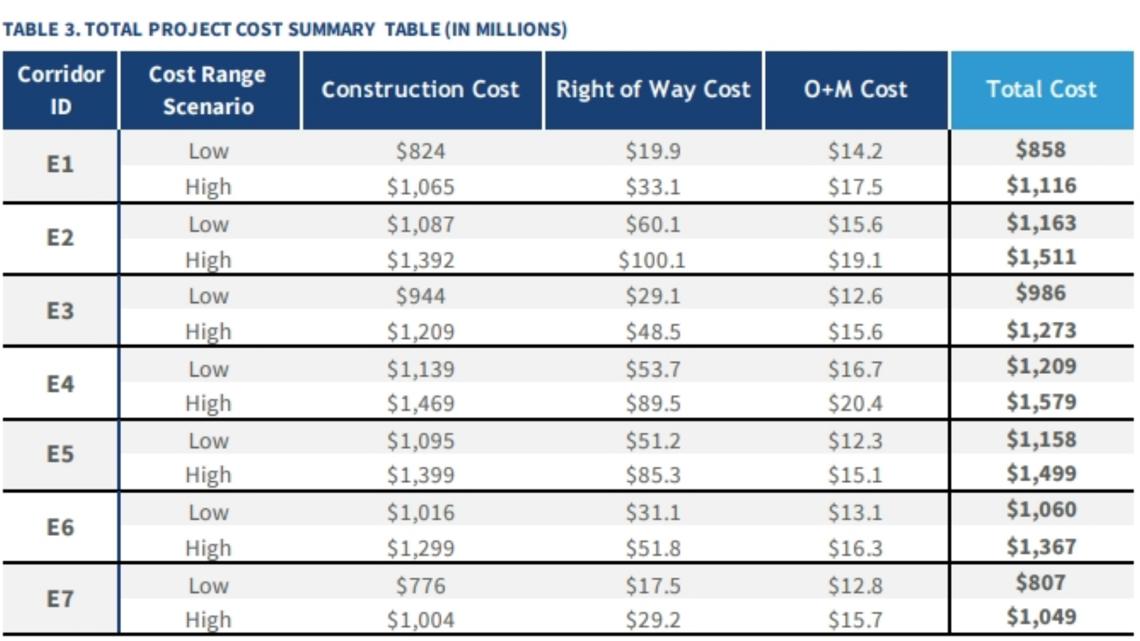Officials say the route could save drivers as much as an hour of time round trip. But it could come at the cost of tolls, according to ODOT’s preliminary report.
TOLEDO, Ohio — A preliminary report on a potential connector between US 23 and I-71 has been completed, the first phase of a project by the Ohio Department of Transportation to better connect northwest Ohio to central Ohio.
The first phase of the project, called the US 23/I-71 Connector Feasibility Study, was completed on Wednesday. ODOT said in the report strengthening this connection between these two parts of the state will improve commercial and recreational ties between Columbus and the Toledo/Sandusky regions. It cited increased freight traffic, boosted tourism travel and sustained growth for both regions.
The report ultimately determined a connector could save “more than an hour round trip” based on estimates, the Toledo Chamber of Commerce said in a press release Wednesday.
Where could the connector be built?
Through a study of the region, ODOT determined in its interim report the Delaware/Marion/Morrow county line to be the best place for a connector. According to the department, this would provide the greatest benefit with the least amount of impacts.
The study examined growth in the region, as well as environmental and recreational areas such as state parks and streams, factors that would limit the area in which a connector could be built between the two areas.


Seven options were conceptualized. They include upgrades of existing state route to freeways, as well as entirely new freeway corridors. Some options could even be tolled, according to the report.
As of this writing, no route has been selected.
A map of the possible corridors are included below:


How much will the connector cost?
Building this connector could cost anywhere between $858 million to $1.579 billion, depending on the route that is selected.
Below is a breakdown of the costs for the various possible routes.


As previously mentioned, this roadway could also come at a cost to the traveler. Some of the proposed routes would not sustain its own operating expenses without tolls. The report suggested a rate of tolls between 10 cents and 60 cents per mile for cars, and 2.5 times that amount for trucks.
What’s next?
The next step in the project is to conduct a feasibility study, which is expected to be completed on Oct. 1, 2026, a year from the date the first report was finished. This phase of the project would include engineering assessments, comprehensive data collection, traffic pattern studies, cost estimation and focused public engagement within the most promising general area, the department said.
Local reaction
In announcing ODOT’s completion of the report, the Toledo Chamber of Commerce expressed optimism about what the project could bring to the northwest Ohio region.
“We applaud the work that has been done by ODOT and the team of consultants to identify a potential solution to our connectivity problem between Northwest and Central Ohio” said Brian Dicken, the Toledo Chamber of Commerce’s vice president for advocacy and strategic initiatives. “The Toledo Regional Chamber of Commerce remains focused on finding a solution to improve the predictability, efficiency and safety of the highway connection between our regions and beyond. As we continue to see growth across Ohio it is important that both of our regional economies have the highway connection they need to be successful.”
This article was published by Karmann Ludwig on 2025-10-01 12:47:00
View Original Post





